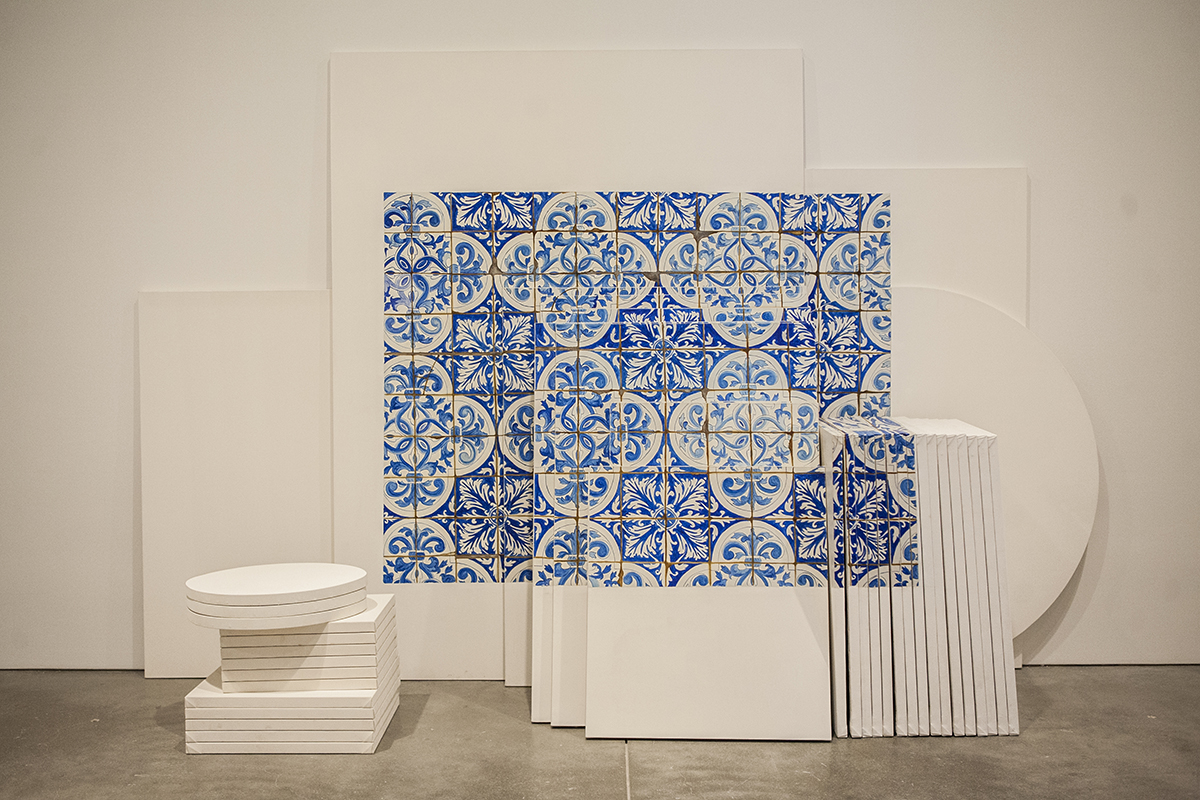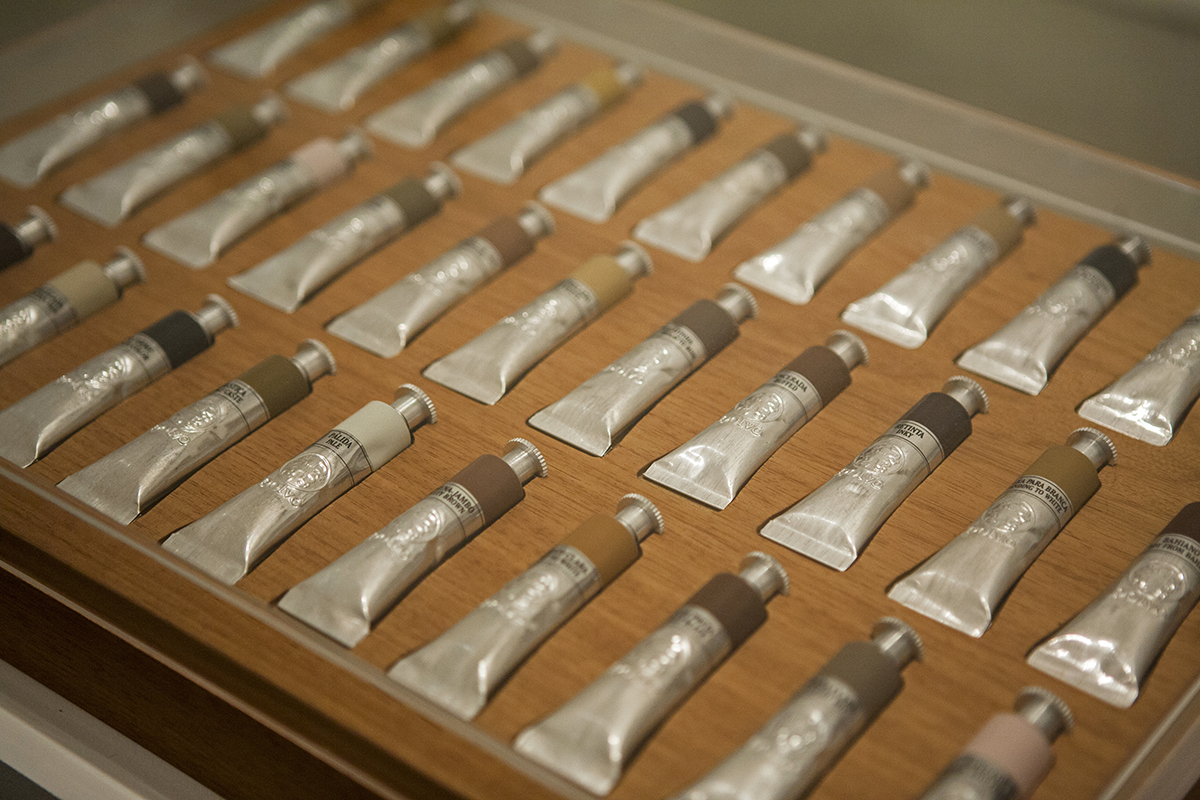ICA Hosts First Solo Adriana Varejão Exhibition in the U.S.

ICA assistant curator Anna Stothart organized the first solo U.S. exhibition for Brazilian artist Adriana Varejão, now on view at the museum. / Photo by Olga Khvan
Even after spending two years organizing an entire exhibition dedicated to Adriana Varejão, ICA assistant curator Anna Stothart still sometimes struggles to find the words to describe the effect rendered on her by the Brazilian artist’s work.
“Sometimes I become actually kind of speechless, I’ll be honest. The way that her paintings make me feel—it’s almost like an adrenaline. I don’t even know how to fully explain it,” she said at a press preview Tuesday. “I’m constantly trying to think of the way that it makes me feel. It creates a different physical relationship than I’ve ever had standing in front of a painting.”
Although Varejão is a household name in Brazil, the exhibition on view at the ICA starting Wednesday is the first solo presentation of her work in the U.S. Rather than the pieces chronologically, Stothart chose to organize the 23 works in the exhibition—including a brand-new piece debuting to the public for the first time—thematically.
“The thing that I really love about Adriana’s work, and you’ll see it in each room, is that she never completes series,” Stothart said. “She’s constantly working and reworking every series that she starts. She’s constantly rethinking the themes.”
Indeed, the same motifs reappear throughout the four rooms of the exhibition. Blue and white azulejo tiles originated in Portugal appear pristine in some works, and in others are invaded by sculptural organs and flesh constructed from polyurethane. Many of the works are populated with depictions of anthropophagy, a practice more commonly known as cannibalism.

Blue and white azulejo tiles originated in Portugal are a recurring motif in Varejão’s work. / Photo by Olga Khvan

Many of Varejão’s works depict organs and flesh, sculpted from polyurethane, bulging from a tiled surface. / Photo by Olga Khvan
But Varejão’s images of the consumption of human flesh are not only meant to be taken literally—instead, they also serve as a nod to the idea of cultural anthropophagy originated by Brazilian poet Oswald de Andrade. In his 1928 “Anthropophagist Manifesto,” he urged artists to “cannibalize” rather than reject the cultural contributions of the country’s colonizers—such as the Portuguese azulejo tiles—in order to create a new and more powerful Brazilian identity as a result.
“Adriana is very interested in the history of Brazil, which is where anthropophagy comes from. She investigates the history, going all the way back, traveling all around the world, to see where the people of Brazil have originated from, to see how the visual motifs that exist in Brazilian cities and the way that people look happened through colonization,” Stothart said.
Drawing on her fascination with racial identity, Varejão created the Polvo series, the most recent works on view at the ICA exhibition, inspired by a 1976 government census in Brazil that gave people the option to describe their own skin color. As a result, people offered 136 distinct answers: “muddy,” “fruity brown,” “fox on fire red,” “not so white,” “brown welcomes black,” to name a few.
“Adriana picked 33 of the most interesting [answers]—and I think the most poetic—and she transformed them into actual pigments,” Stothart said. “She said that whenever she looked for pigment for painting flesh, it was always that pink color, and half the people in the world aren’t pink.”

Tubes of pigment created by Varejão, inspired by a 1976 government census in Brazil that gave people the option to describe their own skin color, are on display at her ICA exhibition. / Photo by Olga Khvan
In the Polvo series—named for the Portuguese word for “octopus” since octopi’s ink contains melanin, the determinant of skin and hair color in humans—Varejão uses the newly created pigments to alter her skin color in two series of portraits of herself, one painted by an academic painter from Brazil and the other by one from China.
“She’s really trying to look at race and racism, and trying to show that really, it doesn’t mean anything,” Stothart said. “One thing I was really interested in engaging is that in Brazil, yes, racism exists, but everyone there embraces this Brazilian identity. To me, that’s an actual physical, cultural extension of the concept of anthropophagy. In the U.S., we think of ourselves as a melting pot, but we’re not really a melting pot. Everyone maintains their difference. You go to neighborhoods, and there’s Chinatown, there’s Little Italy. We all maintain this connection to our heritage, which I think is really interesting.”
Varejão’s work is interlaced with controversial topics, but the artist, according to Stothart, is not trying to enforce any opinions—instead, she merely proposes questions.
“This is her version of history. What she’s provoking us to do is to come up with our own versions of history,” Stothart said. “She’s not saying that there’s one right way or one wrong way. She’s just questioning it, which I truly appreciate.”
“Adriana Varejão” is on view at the ICA through April 5, 2015. For more information, visit ica.org.


